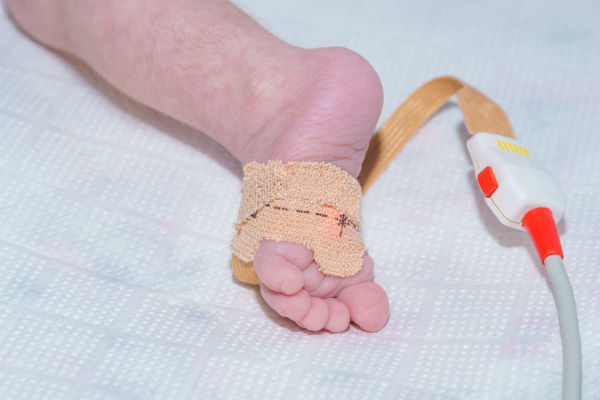Neonatal Inspection and Examination course



This session describes a comprehensive approach to the clinical assessment of a neonatal patient with a respiratory problem. It details what to include in a respiratory inspection and physical examination.
Learning Objectives
By the end of this session you will be able to:
- Describe a comprehensive approach to the clinical respiratory assessment of a neonatal patient
- State what to include in a neonatal respiratory history, inspection and physical examination
The assessment of the newborn and the neonate is not vastly different to the assessment of the older child. However, there are some specific areas which become more pertinent, and this session aims to provide the reader with confidence in a structured and targeted approach.
Before commencing this session you should complete:
- History (172-28)
- Inspection and Examination (172-29)
Sarah Denniston is a paediatric consultant at Heart of England NHS Foundation Trust in Birmingham. She trained in Cambridge and the West Midlands.
She has a special interest in respiratory paediatrics, especially cystic fibrosis. In addition to her clinical roles she is local RCPCH College Tutor, lead for PAU, and teaches EPLS.

- Anaesthesia Fundamentals | Physiology | Ventilatio...
- Posted By eIntegrity Healthcare e-Learning
- Posted Date: 2024-12-26
- Location:Online
- This session describes how and why ventilation and perfusion vary in the healthy lung. Causes of hypoxia, such as hypoventilation, increased dead space and shunt, are discussed to help the trainee explain and manage hypoxia clinically.
- Anaesthesia Fundamentals | Physiology | Pulmonary ...
- Posted By eIntegrity Healthcare e-Learning
- Posted Date: 2024-12-26
- Location:Online
- This session covers the measurement and clinical importance of lung volumes, including functional residual capacity and dead space. Information regarding the performance and interpretation of flow-volume loops is also included.
- Anaesthesia Fundamentals | Physiology | Co2 Carria...
- Posted By eIntegrity Healthcare e-Learning
- Posted Date: 2024-12-26
- Location:Online
- This session covers the physiology of how carbon dioxide is carried by blood, including its conversion into bicarbonate ions and the role of the red blood cell and haemoglobin in this process. The session also describes how buffers work, and the fundament
- Anaesthesia Fundamentals | Physiology | Function o...
- Posted By eIntegrity Healthcare e-Learning
- Posted Date: 2024-12-26
- Location:Online
- This session focusses on the function of haemoglobin in oxygen (O2) carriage from the lungs to other tissues where cells are supplied with the O2 required for oxidative phosphorylation in the mitochondria. We will cover the structure
- Anaesthesia Fundamentals | Physiology | Gaseous Ex...
- Posted By eIntegrity Healthcare e-Learning
- Posted Date: 2024-12-26
- Location:Online
- This session will introduce you to the physiological effects of altitude and the adaptations that occur with acclimatization. It also introduces the pathology and physiology of high pressure and decompression.








